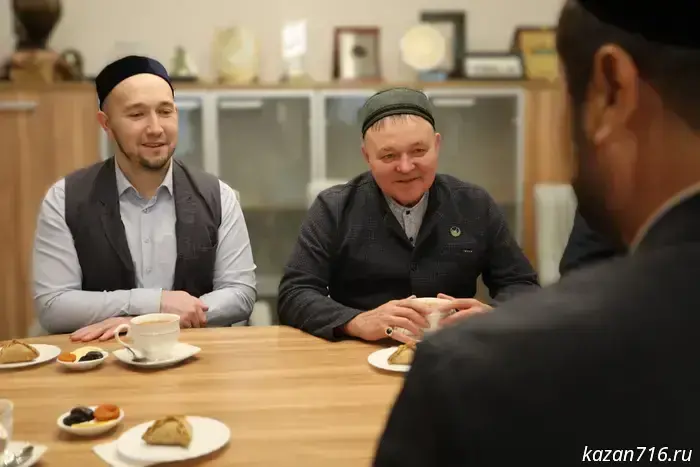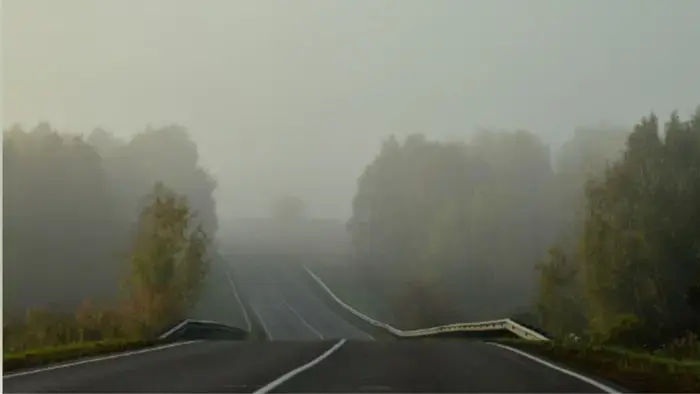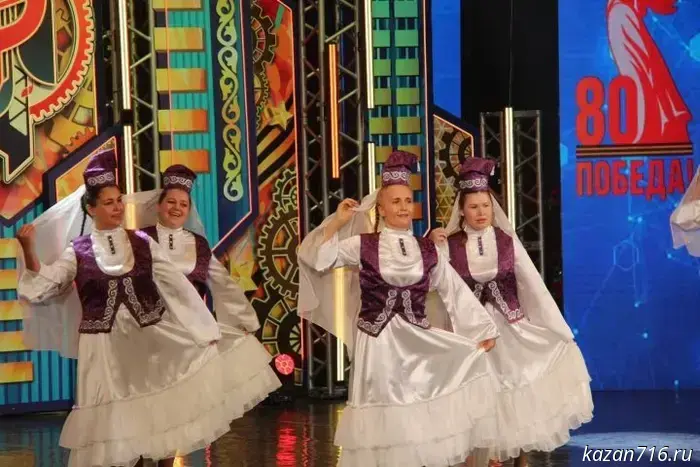At the Institute for Urban Development they discussed the development of the transport system of Greater Kazan.
A round-table discussion was held on options for a parallel route to the Orenburg Trakt.
A round table dedicated to the future of the transport system of Greater Kazan took place at the City Development Institute. The meeting discussed the fate of the Big Kazan Ring (BKK), the need for new bridges across the Volga, and options for routing a parallel road to the Orenburg Trakt.
Photo: Marat Muginov
Participants in the discussion included the director of the municipal City Development Institute Aleksey Gorbunov; the deputy head of Kazan’s executive committee for transport, economic development and trade, Ildar Shakirov; assistant to the Rais of the Republic of Tatarstan Olesya Baltusova; the president of the Moscow branch of the International Academy of Architecture, Andrey Bokov; first deputy of GAU MoszhilNIIproekt, Candidate of Technical Sciences, and founder of the company TransNet, Alexander Polyakov; and others.
Aleksey Gorbunov noted that Kazan’s population is growing rapidly, which is leading to an increase in private car ownership. Such dynamics could lead to a noticeable deterioration of the transport situation within ten years: “By all calculations, over the next ten years the population increase in Kazan and the agglomeration will be significant – essentially, the load on infrastructure will double. If, figuratively speaking, all the pressure falls on a single point, the system will not hold. But if the load is distributed, the structure will be reliable and stable for many years,” he said.
The city’s dynamic development has led to the Big Kazan Ring (BKK) ceasing to function as a high-speed highway. Today the high-speed ring of the Kazan agglomeration is formed by the federal highways M7 and M12. It is these roads that provide bypasses around the city, although the first is already effectively used as a city road. To restore its role as a high-speed bypass, another circuit must be completed – an intra-city parallel to the M7.
High-speed movement on the BKK is limited by differing numbers of lanes on various sections of the road and by traffic lights. Previously, a variant for closing the road ring in the historical part of the city along the Volga with an outlet to Gorky Highway was considered. Now that routing has lost relevance because it would hinder the development of Kazan’s waterfront infrastructure. Closing the ring along the Volga’s water area would separate the city from the coastal part, where various projects are planned or already being implemented.
“We are cutting off the water, and as we all know, the city and republic leadership are now placing a strong emphasis on developing waterfront territories, on greater connectivity of the city with the water. That is something we must not forget,” explained Kazan’s chief architect Il’syar Tukhovatullina.
The City Development Institute developed a proposal to close the BKK via Verkhniy Uslon and Yudino, which would require bridge construction.
The idea of building bridges was supported by the head of Verkhneuslonsky District, Evgeny Varakin. “I dreamed that we would get a bridge. Although officially the district’s population is only 17 thousand people, 60 thousand people permanently reside in the district. On weekends we have 150 thousand people in the district. Can you imagine what that traffic is like? Another more than 90 thousand people come [in]. So my opinion is: these bridges are necessary for the district’s development. I fully support the proposal; we categorically need them,” said Evgeny Varakin.
Another important topic at the round table was alternative approaches to the parallel route for the Orenburg Trakt. Two routing options were considered: one developed by the City Development Institute of Kazan, and the second by the Institute of Spatial Development of the Republic of Tatarstan.
The road alignment proposed by the republican institute emphasizes the outdated BKK paradigm and functions as an entrance gateway from the M12. In the proposed variant, the road is intended for fast travel from the M12 to the city center with a further extension along the Volga and connection near Admiralteyskaya Sloboda to the parallel of Gorky Highway. At the round table it was noted that this option carries high environmental risks. For example, the project affects the strategic Stolbishchensky water intake, requires the clearing of 66.5 hectares of forest, is a significant risk factor for disruption of the Poduvalye ecosystem, isolates an industrial block within the boundaries of Tikhoretskaya St., V. Kulagin St., and Kauchukovaya St. from external connections, and severs the Chyorny Bor and Otarsky forests in the Mirny residential area from existing and planned development territories.
According to the City Development Institute, this option threatens to turn valuable areas of Kazan into a transit zone. The road should not only provide a connection to the M12 but also relieve traffic on the Orenburg Trakt. The routing option proposed by the City Development Institute functions as a parallel road and links the street-and-road network, serving more than 30 thousand people. The route is laid mainly in the technogenic zone of the railway tracks, so it will not entail large-scale environmental damage.
Andrey Bokov assessed the plan for developing Kazan’s transport infrastructure, noting that professionals who understand the level of responsibility are dealing with significant issues of transforming the city. “The stage the city is at is clear: the creation of a system of trunk road networks has been completed in almost all cities today. The task itself is fairly simple; the difficult part is different – it is a heavy ‘surgical’ operation. It is necessary to explain to people what we must do, why we can and must endure some inconveniences for the sake of the future. What you are discussing is the future of our children, without which the city cannot develop or be considered modern. This is an inevitable decision, one through which all cities of the world painfully passed in stages, and today they are prosperous and successful,” he shared.
Tatiana Kulakova, director of the Faculty of Urban and Regional Development at the Institute of Transport Economics of the National Research University Higher School of Economics, emphasized that when considering such large-scale projects the question of funding sources arises. Attention must be paid not only to which transport tasks the concepts address but also to what socio-economic effects they will have on the development of the territories along which the routes will pass.
“These types of routings solve different development tasks for Kazan. We also tried to compare and come to some conclusion. In our view, there is no obvious solution here. But the green routing (i.e., the City Development Institute’s plan), based on the comparison, for example, is cheaper. Some kind of multifactor analysis is needed to make a decision. However, today’s report allowed us to see what we did not see before – the red routing (i.e., the Institute of Spatial Development’s plan) is, most likely, already poorly realizable,” said Tatiana Kulakova.
Summing up the round table, Aleksey Gorbunov noted that the event’s task was to choose the main vector for the development and elaboration of the city’s transport infrastructure and transport framework. “We had a constructive conversation. We made a large groundwork and took many tasks for further elaboration. We received positive feedback on a number of our ideas, including on the development of the Big Kazan Ring with an outlet to the other bank of the Volga,” he concluded.
Kamilla Salikhzyanova
Другие Новости Казани (Казань716)
 A delegation from the Mir Arab madrasa visited the academy.
On October 24, a representative delegation from the "Mir Arab" madrasa, which is located in the Republic of Uzbekistan, visited the Bolgar Islamic Academy, 24.10.2025. Islamic Academy. Republic of Tatarstan. Bolgar.
A delegation from the Mir Arab madrasa visited the academy.
On October 24, a representative delegation from the "Mir Arab" madrasa, which is located in the Republic of Uzbekistan, visited the Bolgar Islamic Academy, 24.10.2025. Islamic Academy. Republic of Tatarstan. Bolgar.
 Emergency warning for 25 October 2025
Consultation – warning about the intensity of a meteorological phenomenon
from 20:00 on 24 October 2025. Apastovsky District. Republic of Tatarstan. Apastovo.
Emergency warning for 25 October 2025
Consultation – warning about the intensity of a meteorological phenomenon
from 20:00 on 24 October 2025. Apastovsky District. Republic of Tatarstan. Apastovo.
 The zonal stage of the festival “Our Time — Our Era” has started in Almetyevsk: 70 performances over the weekend
Almetyevsk has become the epicenter of creativity for Tatarstan's working youth
Event scope: 24.10.2025. Zainsk-Inform. Republic of Tatarstan. Zainsk.
Temperatures in Tatarstan are expected to reach up to +11°C over the weekend.
A cool but mostly dry weekend is expected in Tatarstan. According to the republic's Hydrometeorological Center, daytime temperatures on Saturday and Sunday will rise to +9…+11 °C. 24.10.2025. GTRK Tatarstan. Republic of Tatarstan. Kazan.
The zonal stage of the festival “Our Time — Our Era” has started in Almetyevsk: 70 performances over the weekend
Almetyevsk has become the epicenter of creativity for Tatarstan's working youth
Event scope: 24.10.2025. Zainsk-Inform. Republic of Tatarstan. Zainsk.
Temperatures in Tatarstan are expected to reach up to +11°C over the weekend.
A cool but mostly dry weekend is expected in Tatarstan. According to the republic's Hydrometeorological Center, daytime temperatures on Saturday and Sunday will rise to +9…+11 °C. 24.10.2025. GTRK Tatarstan. Republic of Tatarstan. Kazan.
At the Institute for Urban Development they discussed the development of the transport system of Greater Kazan.
During the round table, a discussion was held on options for a parallel route to the Orenburg Trakt At the Institute for City Development, a round table was held dedicated to the future of the transport system of Greater Kazan. October 24, 2025. Administration of the City of Kazan. Republic of Tatarstan. Kazan.
